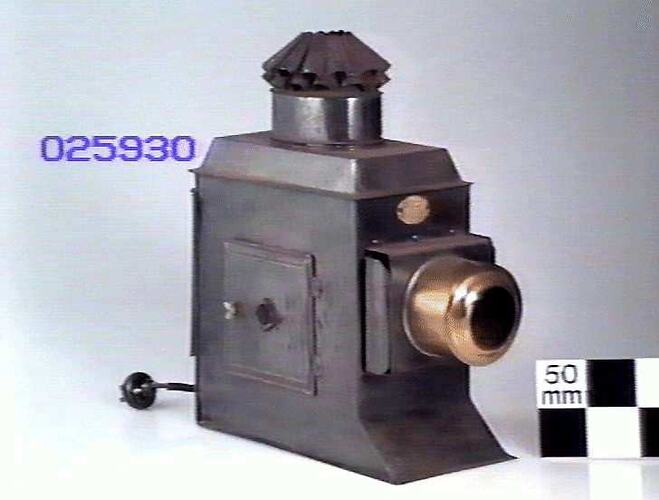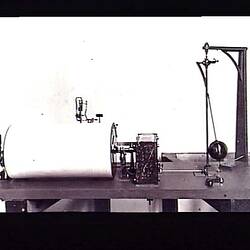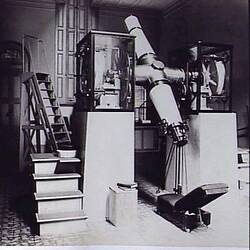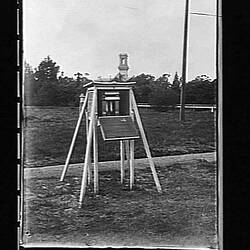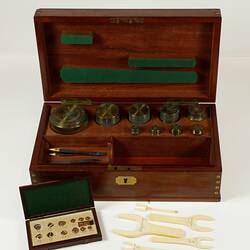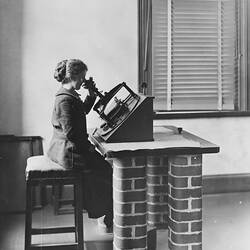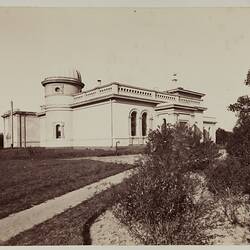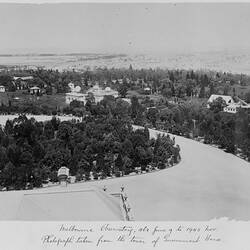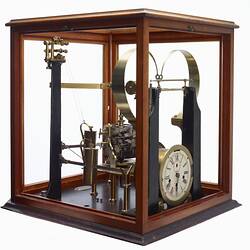Summary
Lantern slide projector made by William Charles Hughes, London, circa 1890, and used at Melbourne Observatory.
W.C. Hughes was an optician as well as a designer, manufacturer and retailer of magic lanterns, taking out numerous patents over the years. Prior to operating his business as an optician Hughes had been a showman, giving dramatic readings in theatres, as well as performing songs and magic shows.
While the invention of the magic lantern is generally seen to be in the 17th century, its greatest popularity as an optical projector spans the late 18th Century to the early decades of the 20th Century. It was used both as a means of entertainment and education.
Physical Description
Rectangular black metal body. Incomplete lens tube, with no insitu glass lenses. Condenster insitu. Roof has oval crinkle top cowl. Right lateral side has square side-hinged door opening into illumination chamber. Centred on door is a circular blue-glass peephole, surrounded by diamond shaped frame. Brass butterfly wing latch to door. Back of lantern has 3/4 length top-hinged door to illumination chamber. Door has circular blue glass peephole, surrounded by diamond shaped brass frame. Back door has a long inverted U cut out at the bottom. Slide out electric illuminant on metal base plate. Base plate has 12 circular perforations surrounding globe socket. Illuminant consists of: short electric chord with 3-pronged plug; circular reflector; globe socket with Osram light globe insitu. Reflector and light socket are mounted on a vertical rod and can be moved up and down along it.
More Information
-
Collection Names
-
Collecting Areas
-
Acquisition Information
Donation from Melbourne Observatory, 1945
-
Manufacturer
W.C. Hughes & Co, Brewster House, 82 Mortimer Road, Kingsland, London, Middlesex, England, Great Britain, circa 1890
-
User
Melbourne Observatory, South Yarra, Greater Melbourne, Victoria, Australia
-
Inscriptions
On oval brass plaque located on front of projector body: 'W.C. HUGHES/OPTICIAN/[B]REWSTER HOUSE/82 MORTIMER R/KINGSLAND RD N/LONDON'
-
Classification
-
Category
-
Discipline
-
Type of item
-
Overall Dimensions
393 mm (Length), 168 mm (Width), 430 mm (Height)
-
References
[Book] Robinson, David, et al. 2001. Encyclopaedia of the Magic Lantern., 2001, 141 Pages
-
Keywords
